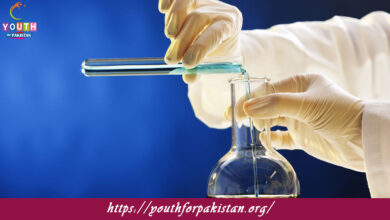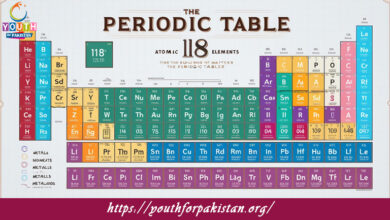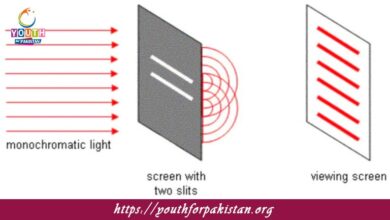Electron Transport Chain MDCAT MCQs with Answers
Welcome to the Electron Transport Chain MDCAT MCQs with Answers. In this post, we have shared Electron Transport Chain Multiple Choice Questions and Answers for PMC MDCAT 2024. Each question in MDCAT Biology offers a chance to enhance your knowledge regarding Electron Transport Chain MCQs in this MDCAT Online Test.
What is the primary function of the electron transport chain?
a) To synthesize ATP
b) To convert glucose to pyruvate
c) To oxidize NADH and FADH2
d) To produce glucose
Where does the electron transport chain occur in eukaryotic cells?
a) Cytoplasm
b) Mitochondrial matrix
c) Inner mitochondrial membrane
d) Nucleus
Which molecule is the final electron acceptor in the electron transport chain?
a) NAD+
b) Oxygen
c) Carbon dioxide
d) Water
How many complexes are involved in the electron transport chain?
a) 2
b) 3
c) 4
d) 5
Which complex in the electron transport chain transfers electrons to oxygen?
a) Complex I
b) Complex II
c) Complex III
d) Complex IV
What is the role of Complex I in the electron transport chain?
a) To transfer electrons from NADH to ubiquinone
b) To transfer electrons from FADH2 to ubiquinone
c) To transfer electrons from ubiquinone to cytochrome c
d) To transfer electrons from cytochrome c to oxygen
What is produced as a byproduct of the electron transport chain?
a) Lactic acid
b) Ethanol
c) Water
d) Carbon dioxide
Which molecule acts as a proton carrier in the electron transport chain?
a) NADH
b) FADH2
c) Ubiquinone
d) Cytochrome c
How does the electron transport chain contribute to ATP synthesis?
a) By generating a proton gradient across the mitochondrial membrane
b) By directly synthesizing ATP from ADP and phosphate
c) By converting glucose into pyruvate
d) By reducing oxygen to water
What is the role of ATP synthase in the electron transport chain?
a) To transport electrons between complexes
b) To pump protons across the mitochondrial membrane
c) To synthesize ATP from ADP and inorganic phosphate
d) To produce NADH from NAD+
How many protons are pumped across the mitochondrial membrane per NADH molecule oxidized?
a) 2
b) 4
c) 6
d) 10
Which complex of the electron transport chain directly receives electrons from FADH2?
a) Complex I
b) Complex II
c) Complex III
d) Complex IV
In the electron transport chain, which molecule donates electrons to Complex III?
a) NADH
b) FADH2
c) Ubiquinone
d) Cytochrome c
Which complex in the electron transport chain is also known as cytochrome c reductase?
a) Complex I
b) Complex II
c) Complex III
d) Complex IV
What is the primary function of Complex IV in the electron transport chain?
a) To transfer electrons from NADH to ubiquinone
b) To transfer electrons from ubiquinone to cytochrome c
c) To transfer electrons from cytochrome c to oxygen
d) To transfer protons across the mitochondrial membrane
Which of the following is not a component of the electron transport chain?
a) Ubiquinone
b) Cytochrome c
c) ATP synthase
d) Phosphofructokinase
Which of the following complexes is involved in both the citric acid cycle and the electron transport chain?
a) Complex I
b) Complex II
c) Complex III
d) Complex IV
How does the electron transport chain generate the proton gradient across the inner mitochondrial membrane?
a) By directly transferring protons from NADH to oxygen
b) By using the energy released from electron transfers to pump protons
c) By synthesizing ATP from ADP and phosphate
d) By breaking down glucose
What is the main purpose of the proton gradient generated by the electron transport chain?
a) To directly synthesize ATP
b) To produce NADH
c) To facilitate the transport of electrons
d) To drive ATP synthesis through ATP synthase
What happens if oxygen is not available for the electron transport chain?
a) The electron transport chain continues to function normally
b) The proton gradient is maintained
c) The electron transport chain stops, and ATP production decreases
d) NADH is oxidized to produce ATP
What is the role of ubiquinone (coenzyme Q) in the electron transport chain?
a) To transfer electrons from Complex I and II to Complex III
b) To transfer electrons from Complex III to Complex IV
c) To pump protons across the mitochondrial membrane
d) To synthesize ATP
Which complex in the electron transport chain is also known as cytochrome c oxidase?
a) Complex I
b) Complex II
c) Complex III
d) Complex IV
How many ATP molecules are produced by the electron transport chain per molecule of NADH?
a) 1
b) 2
c) 3
d) 4
Which component of the electron transport chain is involved in the transfer of electrons to oxygen?
a) Ubiquinone
b) Cytochrome c
c) Complex I
d) Complex IV
What is the net result of the electron transport chain in terms of oxygen consumption?
a) Oxygen is converted to carbon dioxide
b) Oxygen is consumed and water is produced
c) Oxygen is used to produce ATP
d) Oxygen is converted to NADH
Which of the following complexes does not pump protons across the mitochondrial membrane?
a) Complex I
b) Complex II
c) Complex III
d) Complex IV
What effect does inhibition of Complex I have on cellular respiration?
a) It prevents the transfer of electrons from NADH to ubiquinone
b) It inhibits the transfer of electrons from FADH2 to ubiquinone
c) It blocks the transfer of electrons from ubiquinone to cytochrome c
d) It prevents the reduction of oxygen to water
Which intermediate of the electron transport chain directly interacts with ATP synthase?
a) Ubiquinone
b) Cytochrome c
c) Proton gradient
d) NADH
What is the purpose of the proton motive force generated by the electron transport chain?
a) To oxidize NADH
b) To generate ATP through ATP synthase
c) To transfer electrons between complexes
d) To reduce oxygen to water
Which molecule is not a part of the electron transport chain but is involved in the process?
a) ATP synthase
b) Ubiquinone
c) Cytochrome c
d) Glucose
Which complex is responsible for transferring electrons from NADH to ubiquinone?
a) Complex I
b) Complex II
c) Complex III
d) Complex IV
What happens to the energy released from electron transfers in the electron transport chain?
a) It is stored in NADH
b) It is used to synthesize glucose
c) It is used to pump protons across the membrane
d) It is used to convert pyruvate to acetyl-CoA
Which component of the electron transport chain is a water-soluble electron carrier?
a) Ubiquinone
b) Cytochrome c
c) Complex I
d) Complex IV
How does the electron transport chain affect the pH of the mitochondrial matrix?
a) It increases the pH by pumping protons out
b) It decreases the pH by pumping protons in
c) It has no effect on the pH
d) It neutralizes the pH by producing water
Which complex is involved in transferring electrons from FADH2 to ubiquinone?
a) Complex I
b) Complex II
c) Complex III
d) Complex IV
How many ATP molecules are generated per molecule of FADH2 during oxidative phosphorylation?
a) 1
b) 2
c) 3
d) 4
Which complex of the electron transport chain is not involved in proton pumping?
a) Complex I
b) Complex II
c) Complex III
d) Complex IV
What is the result of the proton gradient created by the electron transport chain?
a) It drives ATP synthesis via ATP synthase
b) It directly produces NADH
c) It reduces oxygen to water
d) It converts glucose to pyruvate
What effect does the inhibition of Complex IV have on the electron transport chain?
a) It prevents the transfer of electrons from NADH to ubiquinone
b) It inhibits the transfer of electrons from cytochrome c to oxygen
c) It blocks the transfer of electrons from ubiquinone to cytochrome c
d) It prevents the reduction of oxygen to water
Which complex of the electron transport chain is also known as succinate dehydrogenase?
a) Complex I
b) Complex II
c) Complex III
d) Complex IV
Which molecule is not directly involved in the electron transport chain but plays a role in the process?
a) ATP synthase
b) Ubiquinone
c) Cytochrome c
d) Pyruvate
Which component of the electron transport chain is responsible for transferring electrons from Complex I and II to Complex III?
a) Ubiquinone
b) Cytochrome c
c) Complex IV
d) ATP synthase
How many protons are pumped across the mitochondrial membrane per molecule of FADH2 oxidized?
a) 2
b) 4
c) 6
d) 10
Which complex is responsible for reducing oxygen to water?
a) Complex I
b) Complex II
c) Complex III
d) Complex IV
What is the role of cytochrome c in the electron transport chain?
a) To transfer electrons from Complex I to Complex II
b) To transfer electrons from Complex III to Complex IV
c) To pump protons across the mitochondrial membrane
d) To convert NADH to NAD+
Which complex in the electron transport chain is associated with the generation of a proton gradient?
a) Complex I
b) Complex II
c) Complex III
d) Complex IV
What is the main effect of the proton gradient on the mitochondrial membrane?
a) It neutralizes the membrane
b) It increases membrane potential
c) It decreases membrane potential
d) It creates a proton motive force for ATP synthesis
Which of the following is not a product of the electron transport chain?
a) ATP
b) Water
c) Carbon dioxide
d) Ubiquinone
If you are interested to enhance your knowledge regarding Physics, Chemistry, Computer, and Biology please click on the link of each category, you will be redirected to dedicated website for each category.





